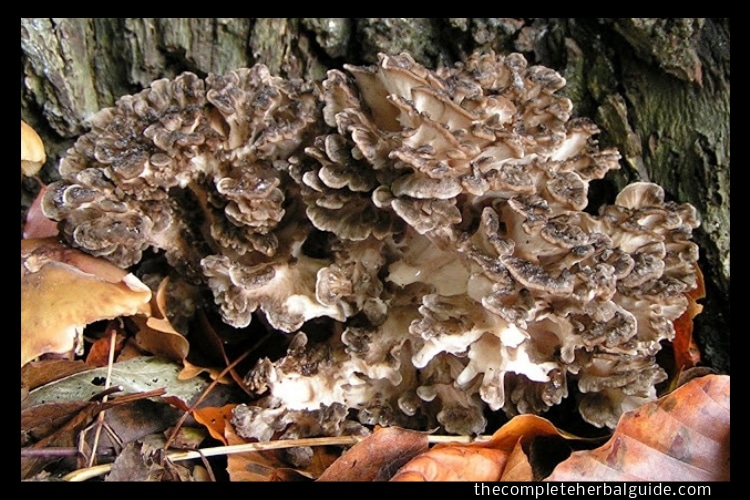
Medicinal Herbs That Can Heal You
Who Needs Medicines When Herbs Can Heal You Naturally? Spices can add much more than flavor and color to your meals; many of them also have unique health-promoting properties. So if salt and pepper are the only spices in your kitchen, you’re missing out on a host of interesting flavors and some potentially potent health benefits. If you’re looking for the healthiest spices for your money, then I suggest that you invest in these seven spices, in terms of taste and disease-fighting capabilities.
Ginger
Health Benefits
The active ingredient in ginger is gingerol, which is a compound that’s believed to relax blood vessels, stimulate blood flow and relieve pain. It’s commonly used as a digestive aid and contains compounds that may ease motion sickness and nausea and inhibit vomiting. This makes it a helpful spice for morning sickness or for people suffering from the side effects of chemotherapy. Ginger is also an anti-inflammatory, which means it may be useful in fighting heart disease, cancer, Alzheimer’s disease and arthritis. Plus, it’s high in antioxidants that fight all kinds of diseases.
How it’s Used
Ginger can be used freshly ground from the root in Asian dishes, as well as in any type of meat, seafood or vegetable dish. Ginger is commonly served along with sushi. Dried ground ginger is typically used in desserts and baking, and it’s also available candied and pickled. Fresh ginger root can also be used to make a soothing ginger tea.
Interesting Tidbit
The health benefits of ginger were documented over 2,000 years ago.
Oregano
Health Benefits
Two of oregano’s compounds, thymol, and carvacrol, have potent antibacterial properties. In fact, a study in Mexico found that oregano was more effective against an amoeba than a common prescription drug called tinidazol. Oregano is also a potent antioxidant, rich in phytonutrients. On a per gram basis, fresh oregano has:
- 42 times more antioxidant activity than apples
- 30 times more than potatoes
- 12 times more than oranges
- 4 times more than blueberries
How it’s Used
Fresh or dried oregano can be added to Italian dishes, salad dressings, egg dishes, vegetables, meats and more.
Interesting Tidbit
Oregano means “mountain joy” and it’s closely related to the herb sweet marjoram.
Cinnamon
Health Benefits: Cinnamon is an anti-microbial food that can stop the growth of bacteria, fungi, and yeast. A study in the August 2003 International Journal of Food Microbiology also found that a few drops of cinnamon essential oil added to carrot broth was able to effectively preserve the food and fight pathogenic organisms–all while improving the flavor of the broth. It also has anti-clotting and anti-inflammatory properties, which help prevent unwanted clumping of blood platelets. And, it may help boost brain function.
People with diabetes should also take note that cinnamon is a useful tool to help control blood sugar. A study in the December 2003 Diabetes Care found that eating one to six grams of cinnamon daily significantly reduced blood sugar levels in people with type 2 diabetes. Meanwhile, it also reduced their triglyceride levels, LDL (bad) cholesterol, and total cholesterol levels. Plus, a study in the February 2004 Hormone Metabolism Research found that this tasty spice appears to prevent insulin resistance even in animals eating a high-fructose diet. And that’s not all. Cinnamon is a powerful antioxidant. A study in the Journal of Nutrition found that out of all spices, cinnamon is one of the richest sources of disease-fighting antioxidants.
How it’s Used
Cinnamon comes ground and in sticks, and can be used in Mexican, Middle Eastern and other ethnic dishes, curries, vegetables, tea, beverages, and of course, desserts.
Interesting Tidbit
In traditional Chinese medicine, cinnamon is used in a tea along with ginger to fight the onset of colds and flu.
Turmeric
Health Benefits
Curcumin, which gives turmeric its bright yellow color, is thought to be the active ingredient in this spice. It’s a potent anti-inflammatory that studies have found is just as effective as drugs like hydrocortisone, phenylbutazone and Motrin. This spice has been found to be helpful in fighting inflammatory bowel diseases, including Crohn’s disease and ulcerative colitis, rheumatoid arthritis, cystic fibrosis, cancer and Alzheimer’s disease. It’s also shown promise in offering cardiovascular and liver protection.
How it’s Used
Turmeric powder can be added to rice dishes, egg salad, salad dressings, curries, beans, and sauces. It has a warm, peppery flavor similar to ginger and orange.
Interesting Tidbit
Turmeric is the spice commonly used in curries that give them their yellow color. It’s also what makes traditional mustard yellow!
Sage
Health Benefits
Sage is an anti-inflammatory and antioxidant. It contains flavonoids, phenolic acids, and oxygen-handling enzymes, all of which give it a unique ability to prevent oxygen-based damage to cells. Sage may be useful in fighting rheumatoid arthritis and other inflammatory conditions, bronchial asthma and atherosclerosis. Sage also appears to promote better brain function. A study in the June 2003 Pharmacological Biochemical Behavior found that people given sage essential oil extracts had significantly improved recall abilities compared to those given a placebo.
How it’s Used
Sage’s subtle, sweet flavor makes it a very versatile herb. It can be added to soups, sauces, salad dressings, meat dishes, casseroles, vegetables, eggs, salads and more.
Interesting Tidbit
Sage means “to be saved.” Because sage is so effective in protecting oxygen-based damage, several companies have been conducting experiments using sage as a natural additive to cooking oils to extend shelf life and prevent the oils from going rancid.
Chilli
Health Benefits
These peppers, which include the popular cayenne pepper, contain capsaicin, an anti-inflammatory compound that helps with pain relief. Chili peppers have been found to help:
- Clear congestion by clearing mucus from the lungs and nose
- Boost immunity
- Prevent stomach ulcers by killing bacteria
- Help with weight loss
- Reduce blood cholesterol, triglyceride levels, and platelet aggregation
- Prevent cancers, including stomach cancer
- Relieve pain
How it’s Used
Chili peppers are great in Mexican dishes and Asian dishes, but that’s not all. Try them with other vegetables, tuna salad, chili, cornbread, dips, curries, soups, sauces and more.
Interesting Tidbit
The hotter the pepper, the more capsaicin it contains. Some of the hottest chili peppers out there are the habañero, Scotch bonnet, and jalapeño peppers.
Parsley
Health Benefits
Chief among parsley’s beneficial properties is its ability to fight cancer. Animal studies have shown that it can inhibit tumor formation, particularly in the lungs. It’s also known to neutralize carcinogens including those found in cigarette smoke and charcoal grill smoke. Parsley is also a rich source of antioxidants and heart-protective nutrients including vitamin C, beta-carotene, and folic acid.
How it’s Used
Parsley comes in two popular varieties, curly and flat leaf. Fresh parsley is more flavorful than the dried variety. The curly version tends to have a more intense flavor than the flat-leaf variety. Use it in soups, salads, and casseroles, or to top fish, meat, potatoes, vegetables and more.
Interesting Tidbit
Parsley is a great breath freshener at the end of a meal.
AUTHOR
Emma Olliff
Emma is a qualified Nutritional Therapist (DipNT CNM) and is registered with BANT (British Association for Nutritional Therapy) and CMA (Complementary Medical Association). She is passionate about helping her clients achieve optimum health through diet and lifestyle.






